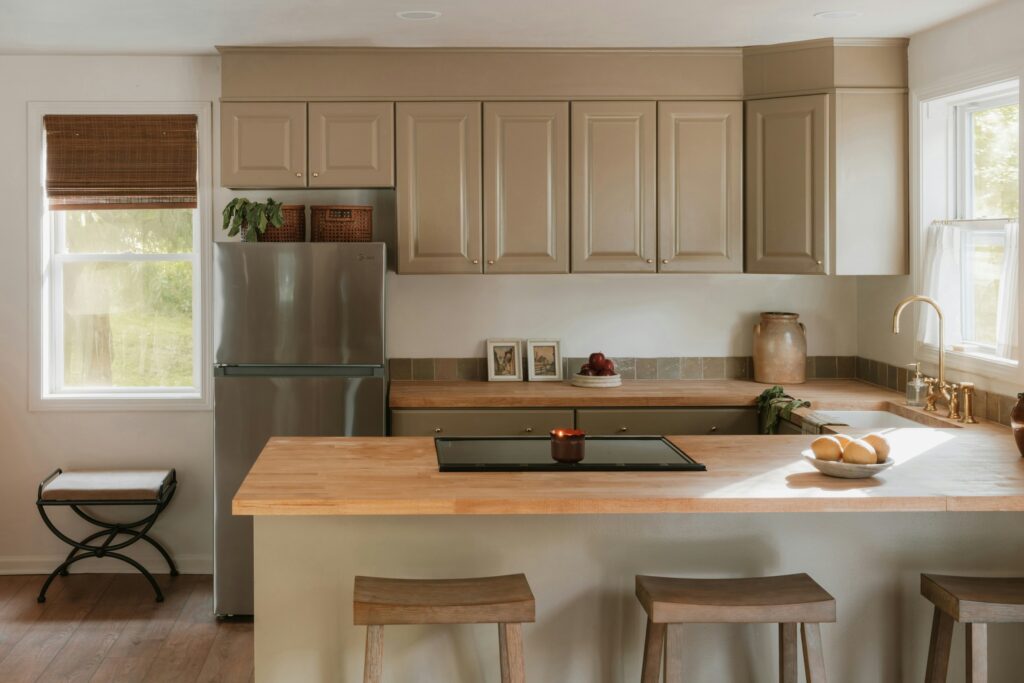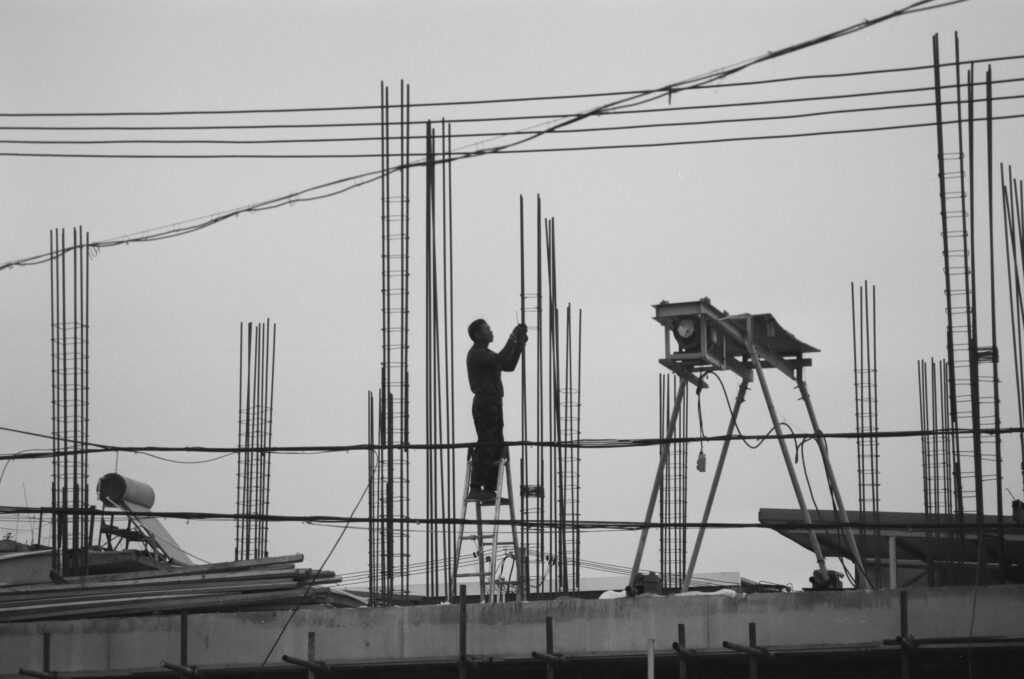Older homes have character. The creaky floors, original windows, built-ins—they don’t make them like that anymore. Underneath the charm, though, are decades of neglect, outdated wiring, leaky plumbing, and insulation that basically acts like tissue paper. They’re hard to love, but even harder to let go of.
What sets older homes apart is their craftsmanship. You’ll find hand-carved details, solid wood, plaster walls. Things built to last—back when longevity, not efficiency, drove design. That uniqueness is exactly what makes them worth saving. But it’s not always about ripping out walls and starting from scratch.
There’s a key difference between renovation and restoration. Renovation updates a space for today: modern lighting, smart systems, whatever makes it livable. Restoration, on the other hand, respects the past—bringing materials and design choices back to their original form. The best projects blend both. You can modernize without erasing the story.
In short, if you’re taking on an older home, know what you’re signing up for. It won’t be easy. But the payoff—living in something real, with a soul—is hard to replicate.
Before you get emotionally attached to that charming fixer-upper, it’s time to get down to the unglamorous stuff. A structural check should be your first stop. That means looking at the foundation for cracks or settling, checking that the walls aren’t bowing, and making sure the roofline is straight. Wiring and plumbing need just as much attention. Is the electrical system outdated or overloaded? Are there signs of leaky pipes or water damage?
Then there are hidden hazards. If the home was built before the late ’70s, lead paint is a real possibility. Asbestos could be lurking in insulation, ceiling tiles, or old flooring. And don’t forget the electrical—knob-and-tube or aluminum wiring can be a red flag for insurance companies, not to mention a financial and safety risk.
Bottom line? Unless you moonlight as a home inspector, bring in a pro. A licensed inspector knows what to look for and can flag issues you’d never notice—before you burn through your budget or get stuck with a money pit.
Renovating your space isn’t just about aesthetics—it’s about pacing and planning. Start with a realistic budget. Then add a cushion for surprises, because there will be surprises. Broken plumbing behind that vintage tile. A wall that isn’t where it’s supposed to be. Set aside at least 15% of your total to cover what you can’t see yet.
Focus on impact. Kitchens and bathrooms still top the list for resale and daily use. But if you live in the space, how you feel matters more than what sells well. Think about where you spend the most time, and start there.
Last, don’t erase the soul of the place. Old wood, strange angles, antique fixtures—make them work with the new. It’s not about making it perfect. It’s about making it feel lived-in, layered, and a little timeless.
Restoring the original bones of a space isn’t about being precious with history. It’s about making good use of what already works—because some things were just built better. Hardwood floors that have taken a beating can often be sanded and sealed into something that looks brand new. Unless there’s water damage or major warping, refinishing almost always beats ripping it out.
Same goes for molding, trim, and doors. A little elbow grease, paint stripper, and sanding can bring back the character faster and cheaper than replacing with flimsy modern substitutes.
Knowing your walls helps too. Plaster tends to show age in hairline cracks, but if it’s still solid, it’s worth keeping. It insulates well and deadens sound better than drywall. If it’s crumbling or loose, replacement might be the smarter call. Drywall is faster and easier to patch, but lacks that old-house depth. Sometimes it’s mix and match. Fix what you can. Replace what you have to. The key is staying honest with what’s worth saving—and what’s just serving nostalgia.
How to Upgrade Without Gutting Charm
Staying relevant doesn’t have to mean starting from scratch. For longtime vloggers and new creators alike, the challenge in 2024 is upgrading production quality and storytelling without losing the original vibe that built your audience. Think polish without pretense. Subtle lighting boosts, tighter edits, and intentional audio can lift your game without making your videos feel cold or overproduced.
One smart move is blending vintage aesthetics with modern tech. Use a classic frame style or familiar backdrop, but work in crisp audio, smart transitions, and clean overlays. It sparks nostalgia while delivering today’s clarity. Your setup should feel lived-in, but purposeful.
And when it comes to trends, go with ones that age well. High-contrast color grading, simple text cues, and evergreen narratives still land. Avoid trendy edits that scream 2023 unless you’re ready to constantly evolve. The sweet spot is creating content that looks good now and still holds its own two years down the line.
You don’t need to lose personality to keep pace. Tweak smart, keep what works, and don’t let cosmetic shifts drown your core message.
Older homes come with character, but they’re not exactly known for bright, airy interiors. Rooms feel boxed in. Hallways eat up usable space. Natural light is often an afterthought. It’s a setup that doesn’t play well with a camera or a minimalist lifestyle.
Vloggers tackling renovations are leaning into smart updates: knocking down non-structural walls for more open flow, maximizing window space, and using glass or reflective surfaces to bounce light deeper into rooms. Task lighting is also getting a major upgrade. We’re talking layers—track lights, LED strips tucked into shelves, small pendants over workstations. These are low-cost changes that pay off on-camera and in daily life.
For creators working with tight square footage, it’s all about multi-use design. Think foldaway desks, built-in storage, mirror walls. The goal isn’t just to make a space look bigger—it’s to make every square inch earn its keep.
Old homes are charming, but they can bleed energy (and money) if you’re not careful. Swapping in energy-efficient windows that mimic traditional styles is a clean win. Look for double- or triple-pane glass with low-E coatings. Combine that with strategic insulation—like spray foam in attics or insulated panels behind old plaster—and your house stays warm without touching the thermostat.
Upgrading HVAC can trigger alarm bells for anyone trying to preserve historic aesthetics. The workaround? Ductless mini-splits. They keep efficiency high while keeping your walls and ceilings intact. With low-profile indoor units and outdoor compressors, they’re quiet and discreet.
Tech-wise, the trick is to keep functionality while hiding the gear. Think smart thermostats tucked inside antique switch plates or wi-fi routers stashed behind vintage books. You want your home to work like it’s 2024, but look like it never left 1924.
See more value-focused upgrades here: 5 Smart Renovation Ideas That Add the Most Value
Old houses have a soul. Stripping them down to studs and replacing everything might seem efficient, but it erases that character. Keeping original trim, doors, and hardware isn’t just preservation—it’s what gives your space roots. Scratches, patina, a creaky hinge or two—they tell stories, and no big-box replica will tell them better.
When possible, salvage and reuse. Reclaimed wood from another room can frame a new doorway. Vintage knobs can be cleaned up instead of tossed. It takes more effort, yes, but the payoff is a space that feels both grounded and unique.
That said, modern life needs modern function. Add insulation inside the old walls. Update wiring and plumbing behind original surfaces. Install smart tech where it makes sense—but do it in a way that doesn’t fight the bones of the place. That’s the sweet spot: blending convenience with authenticity, not one at the expense of the other.
Restoring a home with character isn’t a job for just anyone. You need contractors who get the difference between vintage and outdated, who can tell the story of a space without rewriting it. Respect for the original craftsmanship goes a long way when your goal isn’t to erase history, but to work with it.
That said, you don’t have to make your home a museum. Upgrades are part of the process. Think of them as enhancements, not replacements. Modern lighting, energy-efficient windows, updated plumbing—these things can coexist with hundred-year-old crown molding and creaky hardwoods if done right.
Patience is everything. Restoration is slow, and that’s the point. Rushing usually leads to cutting corners or making choices you’ll regret. Take it phase by phase. Let the home tell you what it needs. The goal isn’t perfection overnight. It’s progress that lasts.
Renovating an older interior isn’t about slapping on a fresh coat of paint. It’s about seeing the bones of a place for what they are—solid, imperfect, full of potential. It takes a clear vision, the discipline to follow through, and a fair amount of grit to deal with what you’ll uncover along the way. Plumbing surprises, outdated wiring, uneven floors—expect them.
But when it’s done right, the result is a space that doesn’t just look good, it feels lived-in. Real character can’t be faked. That worn-in door frame, the original tile in the entry, the layered textures you can’t buy off-the-shelf—this is where history meets comfort.
Modern living doesn’t have to erase the past. Smart updates that respect original details breathe life into the old without making it feel like a museum. The trick is knowing what to keep, what to toss, and what to reinterpret. Do that well, and you end up with a home that’s truly your own. Not trendy. Not cookie-cutter. Just right.


 Jarvison Nagyan is a leading tech analyst at drhextreriorly, known for breaking down complex technologies into clear, practical insights. His work focuses on emerging trends, digital innovation, and how new tools reshape everyday life. Jarvison’s ability to simplify advanced concepts makes him a trusted voice for readers looking to stay ahead in the fast-moving tech world.
Jarvison Nagyan is a leading tech analyst at drhextreriorly, known for breaking down complex technologies into clear, practical insights. His work focuses on emerging trends, digital innovation, and how new tools reshape everyday life. Jarvison’s ability to simplify advanced concepts makes him a trusted voice for readers looking to stay ahead in the fast-moving tech world.

